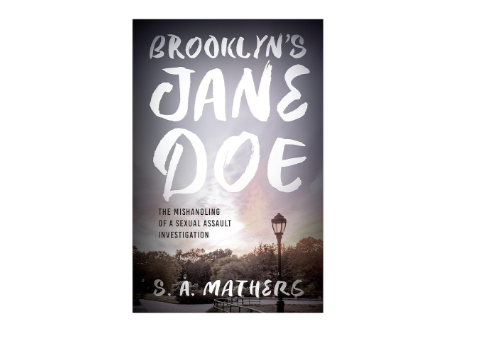Sometimes you close a book and you don’t know whether to cry, rage, or call for every system in place to be burned down and rebuilt. Brooklyn’s Jane Doe by S. A. Mathers left me there. This is a story so unreal, so tragic, that yes, it absolutely should be picked up as a streaming docuseries, but more than that, it should be required reading for anyone who works in media, law, policing and frankly, for all of us who vote, who believe our systems protect justice.
How the system fails
The book details how, in April 1994, a queer woman of color (known in the text only as “Jane Doe”) was sexually assaulted in Prospect Park, Brooklyn. It’s a brutal stranger rape that was just the beginning of her trauma. Instead of being believed, her story was twisted into a smear campaign. NYPD officials leaked misleading information; Mike McAlary, a Pulitzer-Prize winning crime reporter, published stories that alleged she fabricated the assault for “political amplification.” The press, the police, and power structures joined forces in harming her a second time.
Betrayal & Shame
Jane Doe’s assault became a spectacle to be contested. She was raped once in the park and then “again in the media,” as she says, meaning that the public humiliation, doubting, character assassination, guilt by association, all of that became a secondary assault. The narrative pushed by McAlary and others was deeply damaging. Justice delayed but not denied.
Decades later, thanks to advances in forensic science (especially DNA), and a cold case unit, the case was reopened. Jane Doe finally got some measure of closure and a public apology, though nothing can erase the years of suffering.
The book shows how race, sexual orientation, gender, class, media power, police culture, and legal constraints like statute of limitations all come together to silence, disbelieve, delay, and damage survivors. It’s not merely about one case. It’s about patterns.
For readers who aren’t already nerds about law, procedure, or DNA, some chapters are heavy. The forensic/technical explanations sometimes feel like reading a case file, necessary, but at times hard to stay emotionally engaged.
Because the author is a retired detective and brings in a lot of investigative detail, there’s occasional distance. The technical clarity is helpful, but some of Jane Doe’s internal, emotional world (beyond what’s publicly documented) remains at the margins. That creates a tension: you respect how rigorously the facts are handled, but sometimes you hunger for more of Jane Doe’s lived experience.
This book is a mirror: to media outlets, to police departments, to courts, to bystanders. It asks: how often do we decide who gets believed and who doesn’t before even hearing what they say? How often do people of color, queer people, women, get doubly (or triply) violated, first in the attack, then by the systems supposed to protect them? It insists on accountability: not just of the rapist (eventually identified), but of the institutions, of the reporters, of the law. The apology Jane Doe finally received matters but it is so painfully late, weighed down by lives lived in the meantime. It also shows how justice isn’t just about DNA or statutes: it’s about being seen, being heard, being believed. And once that is compromised, the harm compounds.

Final Thoughts
Brooklyn’s Jane Doe is not comfortable. It’s not entertainment. It’s necessary. It pulls no punches, and thanks to S. A. Mathers’s double lens (investigator + system critic) it shows how horror isn’t just in the act of violence, but in the betrayal that follows when power is misused.
I want this story told widely. I want a documentary, yes but more than that: I want conversations in journalism schools, in policing academies, in law workshops, about what went wrong here, and what must never happen again.
Note: Thanks to Netgalley and Bloomsbury for the opportunity to do an early review of this riveting new non-fiction.





